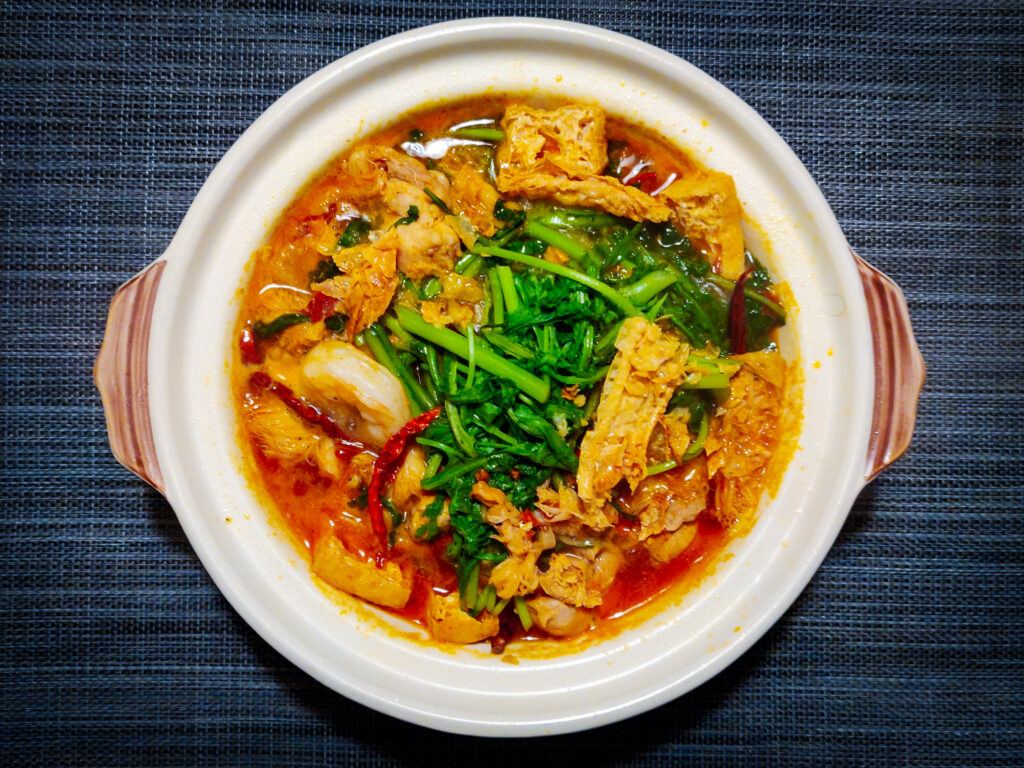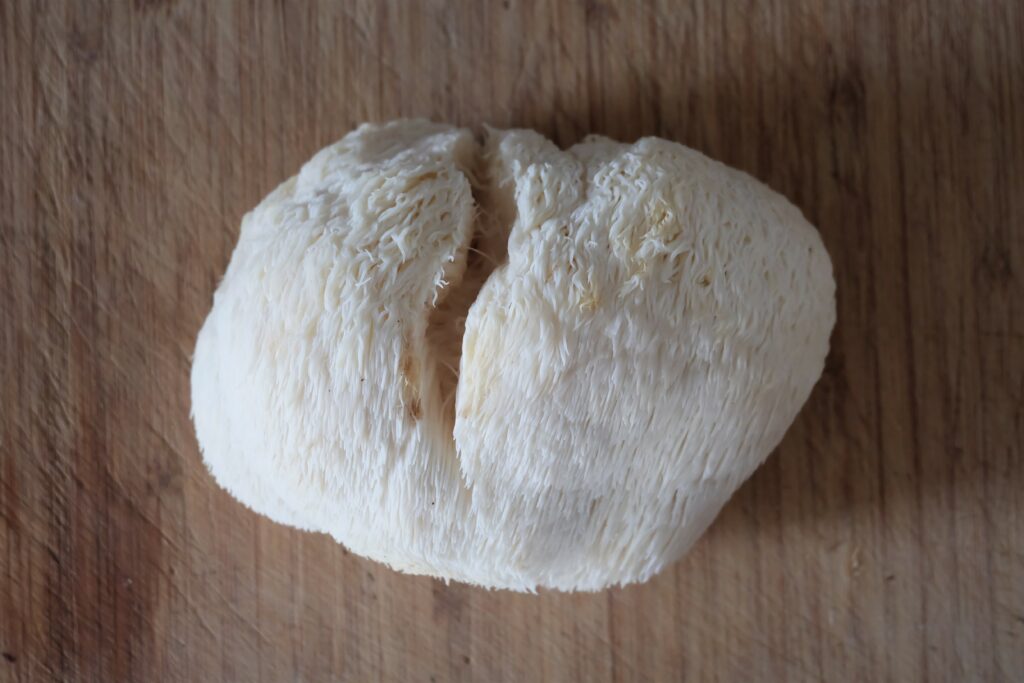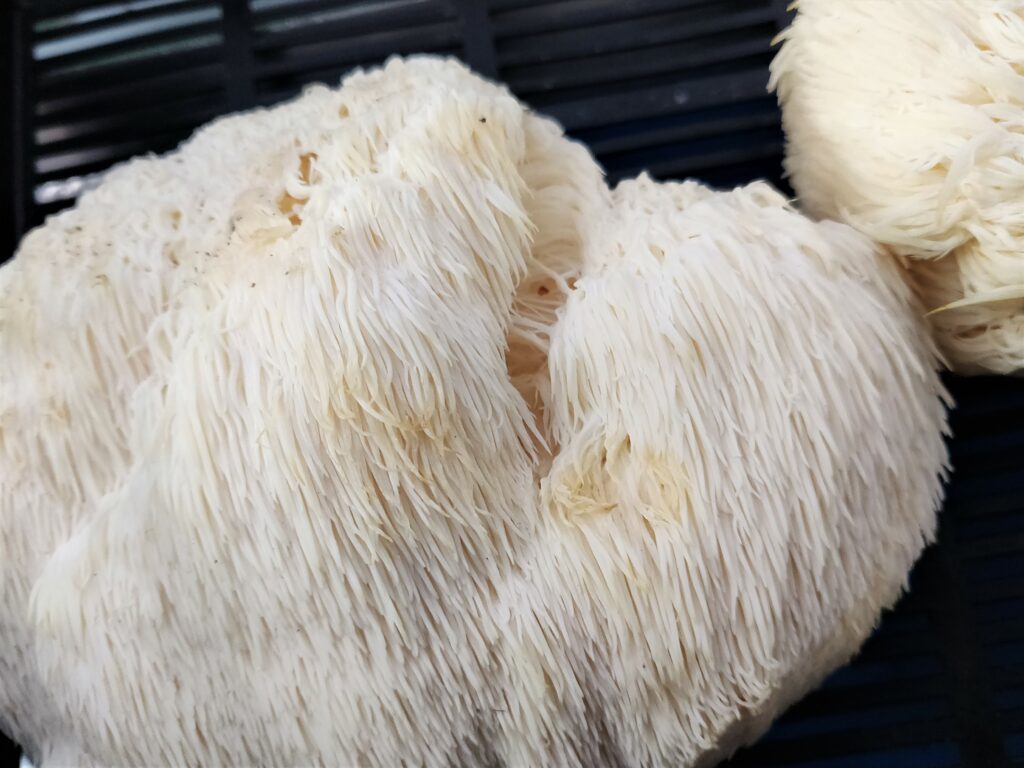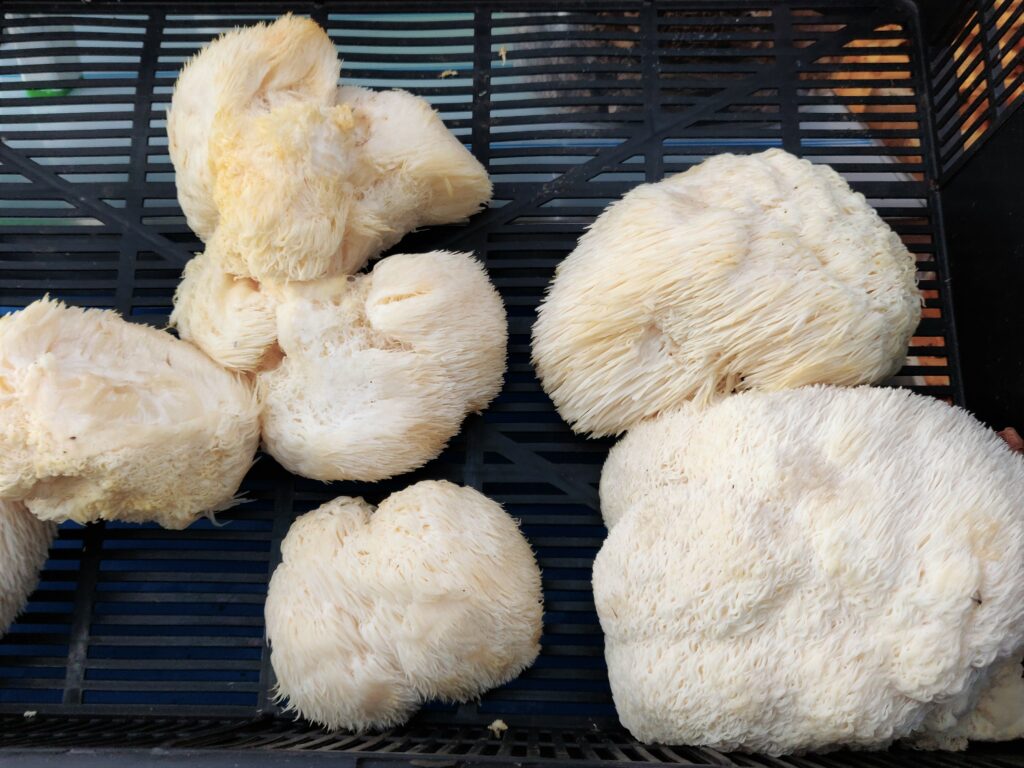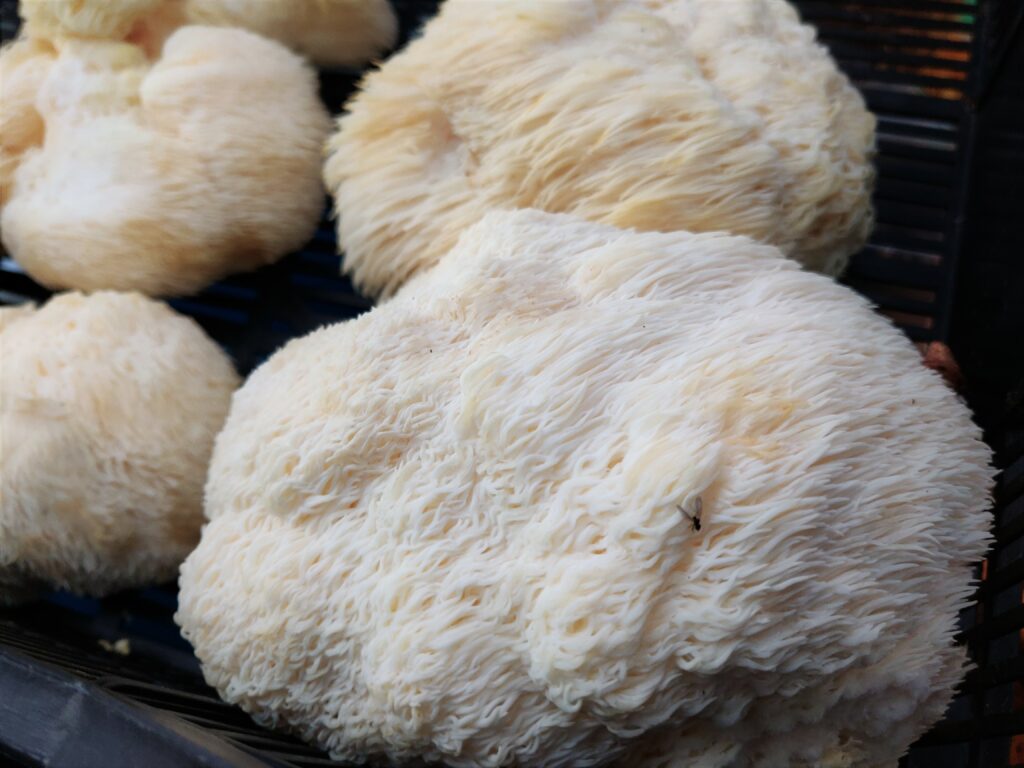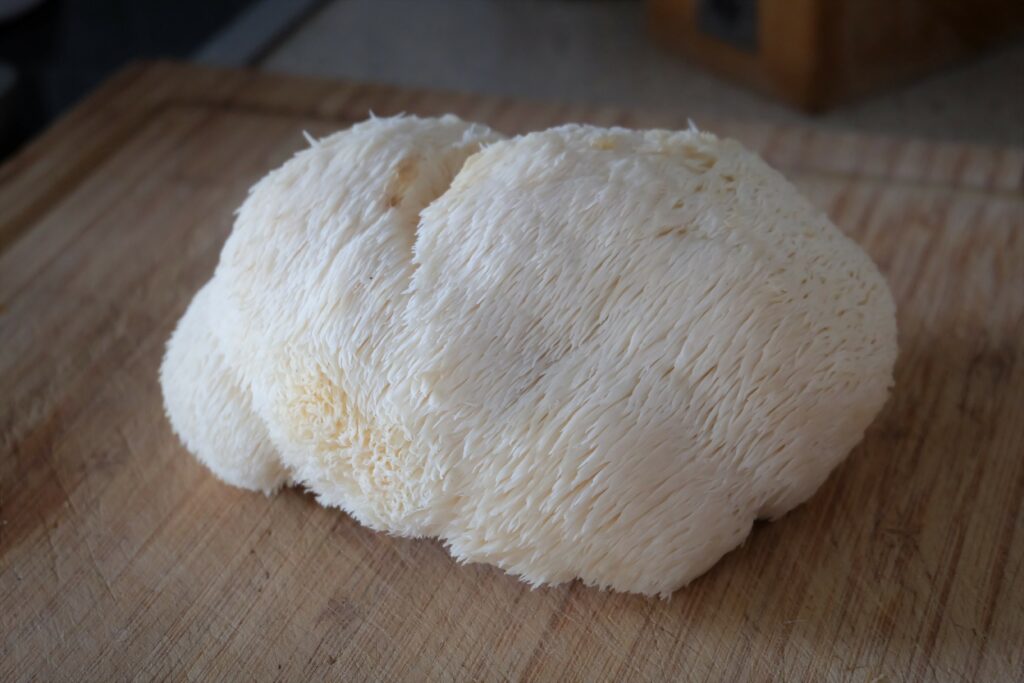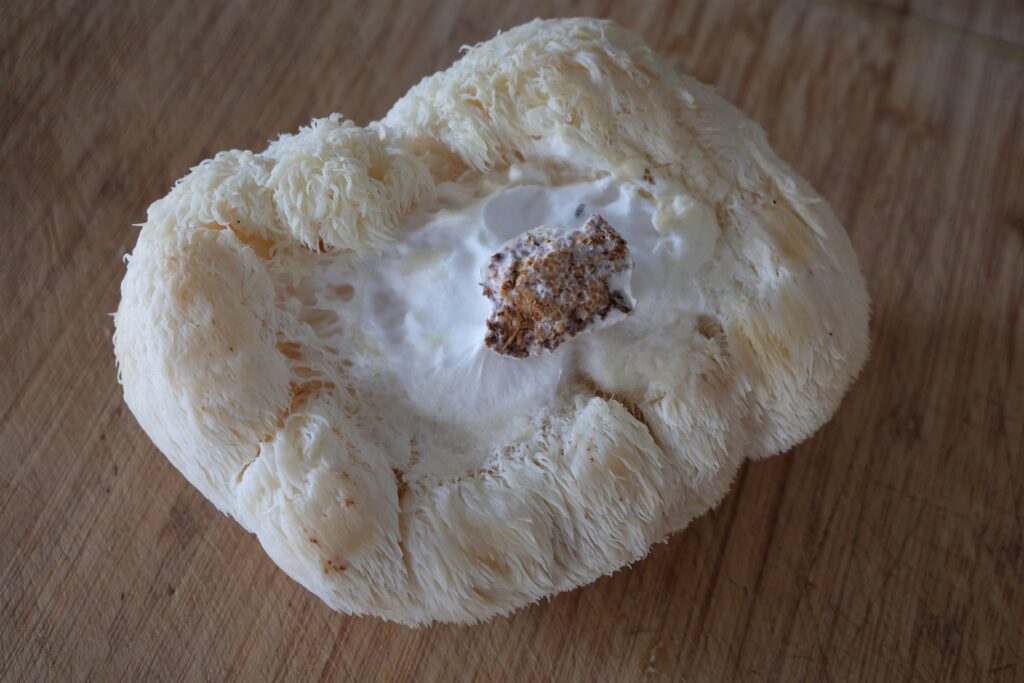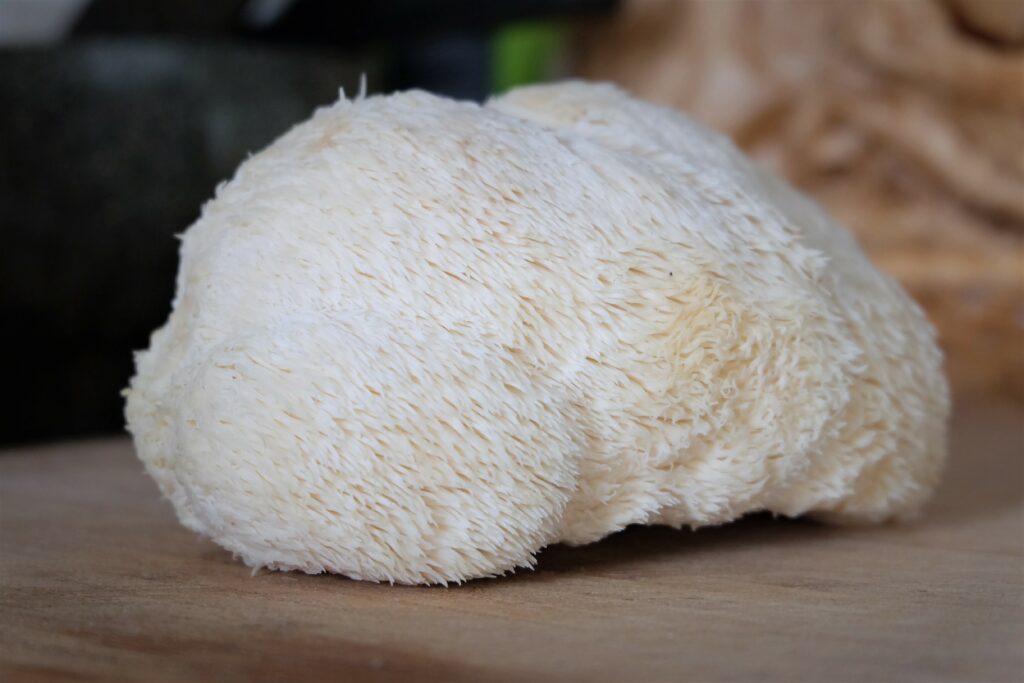- Latin: Hericium erinaceus
- English: Lion’s mane, Satyr’s beard
- Dutch: Pruikzwam
- German: Igel-Stachelbart
- French: L’hydne hérisson
- Spanish: La melena de león
- Chinese: Houtougu 猴头菇
- Japanese: Yamabushitake 山伏茸/ヤマブシタケ
- Korean: Norugungdengi 노루궁뎅이
What are Lion’s Mane mushrooms?
The ‘Hericium erinaceus‘ is a large furry mushroom spread throughout the temperate northern hemisphere across the whole Eurasian continent from Britain to Japan. Its Latin name likens it to hedgehog, which explains its German and French name, while in English and Spanish, the mushroom was named after the king of the animal kingdom, the lion. In Dutch, the name means ‘wig mushroom‘. In Chinese, the name Houtougu 猴头菇 refers to the head of a monkey, while in Korean, the name Norugungdengi 노루궁뎅이 likens it to the ass of a roe deer. Which do you think is the name that most aptly describes the appearance of the Lion’s Mane?
Supposed Health Benefits of the Lion’s Mane mushrooms
In recent times, the Lion’s Mane mushrooms have come out with interesting results in some supposed animal studies as being able to reduce the symptoms of various neurological diseases. However, no extensive medical research has been conducted on human subjects. One should thus take the claims with caution.
According to these rumours, the Lion’s Mane mushrooms work well against dementia, Alzheimer’s disease and even Parkinson’s disease. Many of these diseases are age-related.
If true, then Lion’s Mane mushrooms should be further studied to help us ascertain what its exact functions are in preventing the deterioration of human cognitive and neurological functions.
Other claims also include the Lion’s Mane mushrooms’ ability to help with anxiety and depression. I am against taking drugs for mental health, simply because this can easily descend into an addiction. If the Lion’s Mane mushrooms do work, then it should be tested for non-addiction and zero toxicity.
The good thing is there has so far not been any report of side-effects of the consumption of Lion’s Mane mushrooms.
If you are consider the test the health benefits of Lion’s Mane mushrooms, then you should eat it as part of your diet, as prescribed by Chinese medicinal cuisine’s principles, rather than to pop pills.
The Role of Lion’s Mane mushrooms in Chinese Medicinal Cuisine
Lion’s Mane mushrooms are called Houtougu 猴头菇 in Chinese, and have long been considered both a delicacy and a medicinal ingredient in Chinese cuisines.
Due to the difficulties of harvesting, though it is a common mushroom species, the Lion’s Mane mushroom ranks one of the four delicacies (四大名菜) in Chinese cuisine, with bear paw (熊掌), sea cucumber (海参) and shark fin (鱼翅).
Lion’s Mane mushrooms are known in Chinese medicinal cuisine as to be anti-aging, so its supposed benefits are not dissimilar to modern western claims.
The consumption of Lion’s Mane mushrooms however are different in Chinese medicinal cuisine. It is mostly first dried completely and sold as a dried ingredient. While most dried Chinese mushrooms such as the Shitake or Wood Ear need to be soak to dehydrate, the Lion’s Mane mushrooms are mostly added directly into a medicinal soup in the beginning. The idea is to ‘break down’ the ingredient into the soup in order to reap its benefits, rather than to regain its physical appearance.
The most common preparation of Lion’s Mane mushrooms in Chinese medicinal cuisine is the soup of Lion’s Mane mushrooms with pork (猴头菇炖瘦肉): 3 portions of dried Lion’s Mane mushrooms, 500g lean pork, 2 slices of fresh ginger, 1 tsp salt with 4 rice bowls of water. The combination is then double-boiled (pot within a pot of water) on low heat for 2 hours.
How do you prepare fresh Lion’s Mane mushrooms?
In European preparations, the Lion’s Mane mushrooms are cut into slices, and often grilled or pan-fried with garlic and salt.
The texture of Lion’s Mane mushrooms is likened to that of crab or lobster. So many recipes either pair them with seafood, or use them as substitutes in vegan crab cakes.
In Chinese cuisines however, Lion’s Mane mushrooms first need to be treated for its inherent bitterness and excess moisture. 80% of a Lion’s Mane mushroom is water.
The Lion’s Mane mushrooms are first torn by hand into bite-sized strips. They are then blanched in boiling water for five minutes. Once drained through a colander, they are then squeezed to get the water out.
Fresh Lion’s Mane mushrooms are often stir-fried with meat in Chinese cooking. A basic Lion’s Mane mushrooms stir-fry is with slices of beef and garlic. The spongy nature of Lion’s Mane mushrooms really works well with meat because it soaks up all the meat juices in the cooking process.
Fresh Lion’s Mane mushrooms do not store well. They need to be constantly hydrated (to maintain their high moisture levels). Once they start to turn yellow, they will need to be discarded due to the easy bacterial buildup in its gills.
